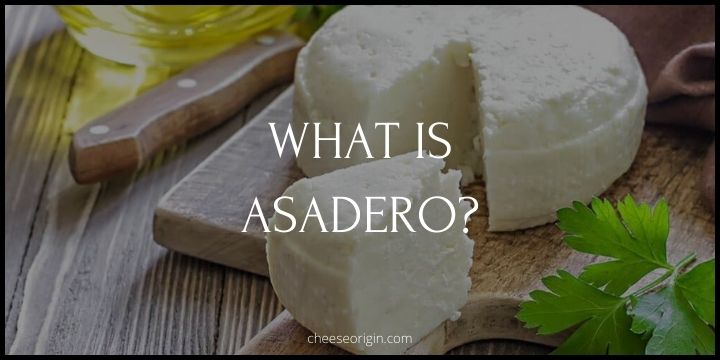What is Ricotta? All You Need to Know About This Versatile Cheese
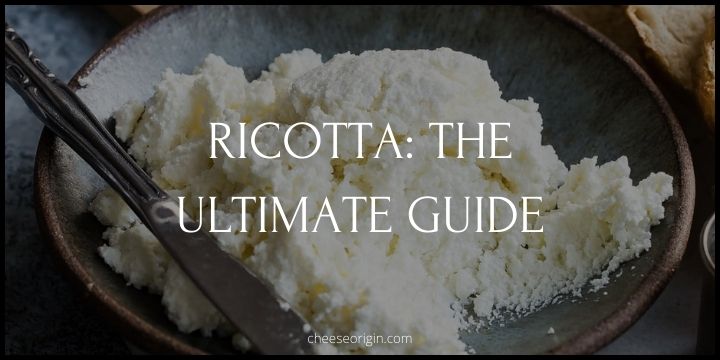
Welcome to our comprehensive guide on Ricotta cheese, the Italian delight that’s won hearts and palates worldwide! With its creamy texture and mild flavor, Ricotta has become a staple in many kitchens, adding a touch of culinary elegance to everything from pasta dishes to desserts.
But what exactly is Ricotta? Translating to ‘recooked’ in Italian, Ricotta is a unique “whey cheese”, produced from the leftover whey of sheep, cow, goat, or Italian water buffalo milk during the making of other cheeses. Its name reflects its traditional production process, where the whey undergoes a second cooking to yield this delicious cheese.
Beyond its origin, this guide will explore the process of making Ricotta at home, which is surprisingly simple and rewarding. You’ll discover that with just a few ingredients—whole milk, lemon juice or vinegar, and salt—you can create your own creamy, fresh Ricotta cheese.
Whether you’re a seasoned chef or a curious foodie, this guide will offer a deeper understanding of Ricotta cheese, its production, and its versatile applications. So, let’s dive into the wonderful world of Ricotta!
Quick facts about Ricotta
| Fact Category | Details about Ricotta |
|---|---|
| Origin | Italy |
| Type of Milk Used | Traditionally made from the whey left over from the production of other cheeses, usually from sheep, cow, goat, or buffalo milk. |
| Taste | Mild, slightly sweet, and creamy. |
| Texture | Soft, granular, and slightly grainy. |
| Color | White |
| Nutritional Value (per 100g) | Approximately 174 calories, 11g of protein, 13g of fat, and 3.6g of carbs. |
| Uses in Cooking | Commonly used in Italian dishes like lasagna, cannoli, and ravioli. Also used in desserts and as a spread on bread. |
| How to Store | Keep refrigerated and use within one week. Can also be frozen for up to 6 months. |
| Homemade Ricotta | Can be made at home by heating whey or whole milk with an acid (like vinegar or lemon juice) and then straining it. |
What is Ricotta?
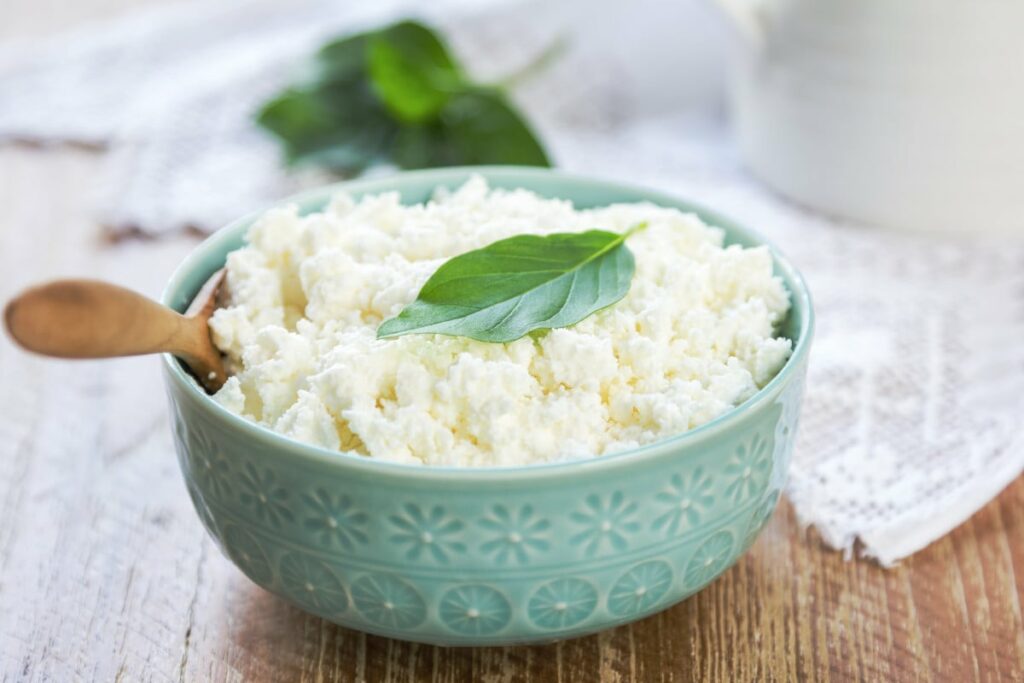
Ricotta is a creamy, white cheese originating from Italy. The word “ricotta” means “recooked” in Italian, referring to the method by which the cheese is made. Unlike many other cheeses, ricotta is not made directly from whole milk. Instead, it’s made from the whey left over from the production of other cheeses, such as mozzarella or provolone.
The process involves heating the whey until the remaining proteins start to solidify. These are then skimmed off and allowed to drain, resulting in a soft, mild cheese with a slightly sweet flavor and grainy texture. Ricotta can be made from the whey of cow, sheep, goat, or Italian water buffalo milk.
Ricotta is a versatile cheese that can be used in both savory and sweet dishes. It’s a key ingredient in classic Italian dishes like lasagna and manicotti, but it can also be used in cheesecakes, cannoli, or simply spread on toast.
What does Ricotta taste like?
Ricotta cheese is known for its delicate and mild flavor profile. It has a subtle sweetness with a hint of nuttiness, but the taste is generally unassertive, allowing it to blend well with other ingredients in a dish.
The texture is soft, creamy, and slightly grainy, which adds a unique mouthfeel to culinary creations.
While the flavor can vary slightly depending on whether it’s made from cow, sheep, goat, or buffalo milk, it typically retains its characteristic light, fresh taste that makes it versatile in both sweet and savory dishes.
Ricotta tasting notes
- Flavor Profile: Ricotta has a mild, subtle flavor that leans towards the sweet side. It is not as tangy or salty as other cheeses, which allows it to blend well with many ingredients.
- Sweetness: The natural sweetness of Ricotta is one of its defining characteristics. This sweetness is delicate and subtle, making it suitable for both savory and sweet dishes.
- Texture: Ricotta has a soft, creamy, and slightly grainy texture. It’s this unique texture that adds a delightful mouthfeel to dishes.
- Aftertaste: The aftertaste of Ricotta is generally light and fresh, without the strong lingering flavors often associated with aged cheeses.
- Variations: The taste of Ricotta can vary slightly depending on the type of milk used (cow, sheep, goat, or buffalo). For instance, Ricotta made from sheep’s milk tends to have a slightly richer and sweeter flavor compared to the one made from cow’s milk.
- Pairings: Due to its mild flavor, Ricotta pairs well with a variety of foods and wines. It complements fresh fruits and honey in sweet dishes and pairs excellently with herbs, garlic, and tomatoes in savory dishes. It also goes well with light-bodied white wines and fruity red wines.
Is Ricotta just cottage cheese?
No, ricotta and cottage cheese are not the same. While they may look somewhat similar and both have a mild flavor, there are significant differences between them.
| Attributes | Ricotta | Cottage Cheese |
|---|---|---|
| Origin | Italy | United States |
| Production Method | Made from leftover whey from cheese production | Made directly from cow’s milk |
| Flavor | Slightly sweet | Mildly tangy, milky |
| Texture | Smooth, creamy, slightly grainy | Chunky due to small curds, often wetter |
| Common Uses | Used in both sweet and savory dishes like lasagna, cheesecake, cannoli | Often eaten on its own or with fruit and granola, can also be used in cooking and baking |
Ricotta:
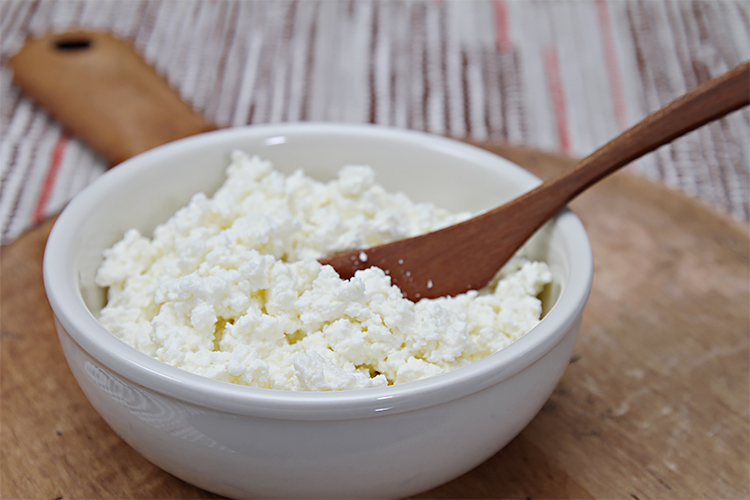
- Originates from Italy.
- Made from the leftover whey from making other types of cheese.
- Has a slightly sweet taste.
- The texture is smooth and creamy but can be slightly grainy.
- Used in both sweet and savory dishes, including lasagna, cheesecake, and cannoli.
Cottage Cheese:
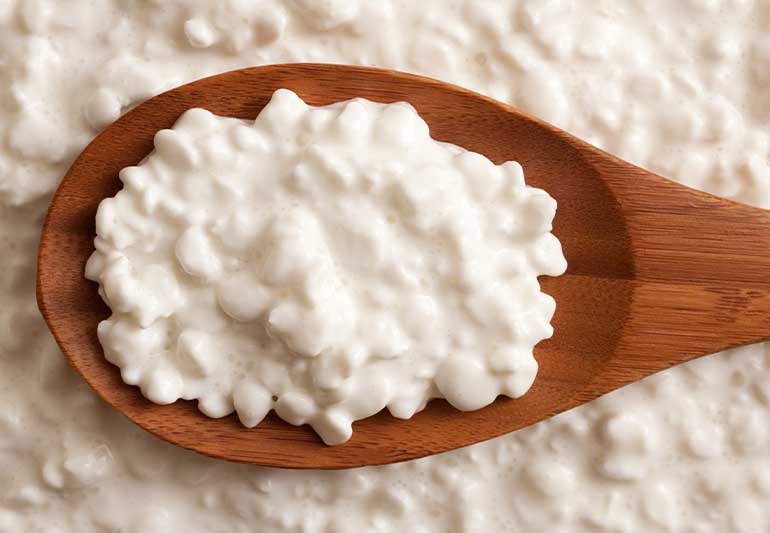
- Originates from the United States.
- Made directly from cow’s milk.
- Has a mildly tangy, milky flavor.
- The texture is chunky due to the small curds, and it’s often wetter than ricotta.
- Commonly eaten on its own or with fruit and granola, but can also be used in cooking and baking.
>> Click here to read our in-depth guide on Cottage Cheese
What is the difference between regular cheese and Ricotta?
- Production Method: Most cheeses are made from the curds that form when milk is coagulated, while ricotta is traditionally made from the whey left over from the production of other cheeses. This whey is reheated until additional proteins coagulate and these are then harvested as ricotta.
- Texture: Ricotta has a distinctive, slightly grainy texture, unlike many other cheeses which can range from soft and creamy to hard and crumbly.
- Taste: Ricotta has a mild, subtly sweet flavor. This is in contrast to many other cheeses which can have flavors ranging from extremely mild to very sharp, tangy, or pungent.
- Aging Process: Many kinds of cheese are aged for weeks, months, or even years to develop their flavors, but ricotta is a fresh cheese that’s ready to eat immediately without any aging.
- Use in Recipes: Due to its mild flavor and creamy texture, ricotta is often used in baking and desserts, as well as in pasta dishes like lasagna. It can be used as a filling, a topping, or an ingredient in dough. Other cheeses have a wide range of uses depending on their specific characteristics.
Why is Ricotta cheese good for you?
Ricotta cheese is considered healthy due to its nutritional profile.
- High in Protein: Ricotta is a good source of protein, which is essential for building and repairing tissues in your body.
- Rich in Vitamins: It contains several vitamins such as vitamin A, which is important for vision and the immune system, and various B vitamins, which are important for energy production and brain function.
- Contains Minerals: Ricotta is a good source of calcium, which is necessary for bone health, and phosphorus, which plays a role in how the body uses carbohydrates and fats.
- Lower in Fat: Compared to many other cheeses, ricotta has less fat and fewer calories, making it a better choice for those watching their calorie or fat intake.
- Good for Digestive Health: The whey in ricotta is rich in lactose and lactic acid bacteria, which can promote a healthy gut microbiome.
However, like any food, it’s important to consume ricotta in moderation as part of a balanced diet. Also, those who are lactose intolerant or allergic to dairy products should avoid it.
Which is healthier Ricotta or cottage cheese?
| Nutrient | Ricotta Cheese | Cottage Cheese |
|---|---|---|
| Calories | Higher | Lower |
| Fat | Higher | Lower |
| Protein | High | High |
| Calcium | High | High |
| Vitamin A | Present | Present |
| Omega-3 fatty acids (DHA and EPA) | Present (in some versions) | Not Typically Present |
| Selenium | High | Moderate |
| Vitamin D | Depends on the product | Depends on the product |
| Cholesterol | Can be reduced with part-skim versions | Lower |
| Muscle growth promotion | Yes, due to high-quality whey | Yes, due to high protein |
Ricotta nutrition facts
| Nutrient | Amount |
|---|---|
| Calories | 186-216 |
| Total Fat | 13-16.1g |
| Saturated Fat | 10.3g |
| Cholesterol | 63mg |
| Sodium | 104-135mg |
| Carbohydrates | 8.9-9g |
| Dietary Fiber | 0g |
| Sugars | 0.3g |
| Protein | 9.3-11.4g |
| Calcium | Varies |
| Phosphorus | 154mg |
| Potassium | 219mg |
| Zinc | 0.53mg |
What do you eat Ricotta with? Pairing guide
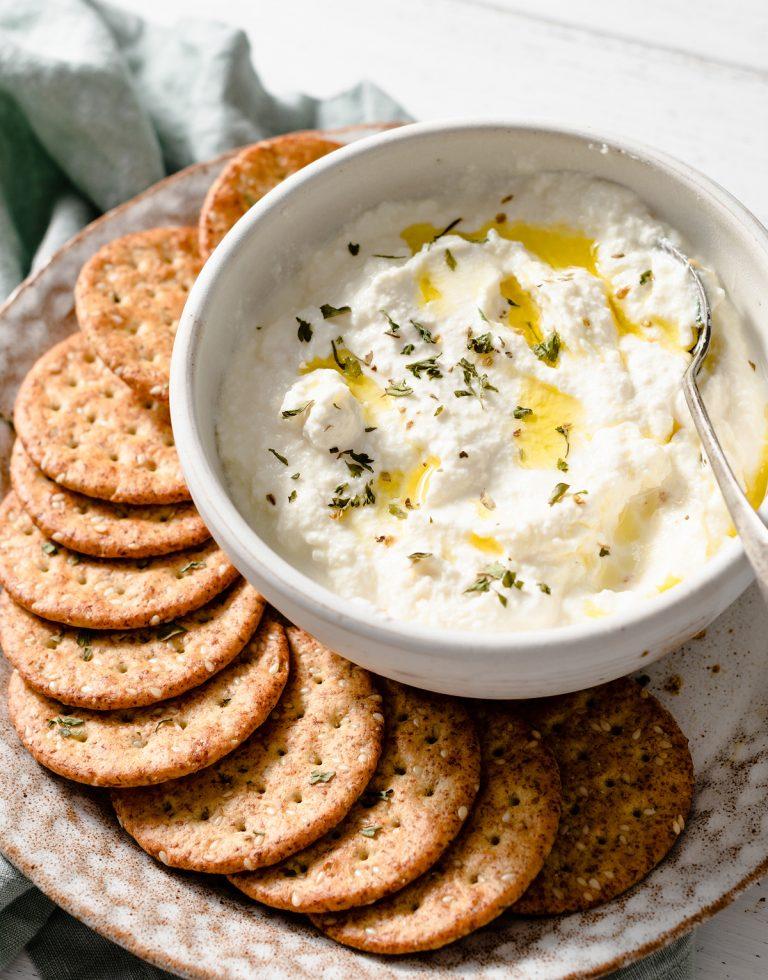
Food that goes well with Ricotta
| Category | Foods |
|---|---|
| Appetizers | Charcuterie board, Ricotta Toast, Figs with Ricotta Cheese, Ricotta Cheese Phyllo Cups, Apricot Ricotta Honey Basil Bites, Whipped Ricotta Dip with Honey & Garlic. |
| Main Dishes | Lemon ricotta pasta, Ricotta pizza, Barilla Lasagna, Zucchini & herbed ricotta flatbread, Mushroom, Spinach and Ricotta Crepes, Tomato, Basil, and Ricotta Pizza. |
| Desserts | Grilled peaches with lavender honey whipped ricotta, Whipped ricotta bowls with roasted pears, Ricotta Pancakes with Brown Butter-Maple Syrup and Blueberry Compote. |
| Salads | Ricotta Salata salad, Summer Salad With Herbed Ricotta. |
| Others | Ricotta with corn and scallions, Ricotta with pesto and tomatoes, Crostini with ricotta and peas, Sun Dried Tomato Pesto, Strawberry Ricotta spread on crackers. |
Also read: 11 Best Crackers that Pair Well with Cheese
Beverage that goes well with Ricotta
| Category | Beverages |
|---|---|
| Wine | Vermentino, Pinot Noir, Sauvignon Blanc, Chardonnay, Riesling, Gewürztraminer, Lambrusco, Chenin Blanc |
| Cocktails | Strawberry Ricotta Gelato Fizz, Cannoli Martini |
| Non-Alcoholic | Lemon Juice (in blends and recipes) |
Also read: Best Wine and Cheese Pairings: The Ultimate Guide
What cheese is closest to Ricotta? 10 best substitutes
| Substitute | Description |
|---|---|
| Cottage Cheese | Light and mild, often used as a ricotta substitute. |
| Cream Cheese | Popular substitute that can make dishes equally creamy. |
| Sour Cream | Tangy substitute that can work well in some recipes. |
| Coconut Cream | Despite its different texture, it’s a good substitute due to its taste, flavor, and wateriness. |
| Queso Fresco | Commonly used as a substitute depending on the recipe. |
| Buttermilk Cheese | Another popular substitute that adds a creamy texture to dishes. |
| Full-fat Plain Yogurt | Can be used in a pinch, especially for desserts or soups. |
| Plain Greek Yogurt | Works well as a substitute in a pinch, especially if used slightly less than the amount of ricotta called for. |
| Mascarpone | A thick, creamy Italian cheese that can be used as a substitute in many recipes. |
| Goat Cheese | A tangy, creamy option that can replace ricotta in certain dishes. |
How to make Ricotta cheese at home?
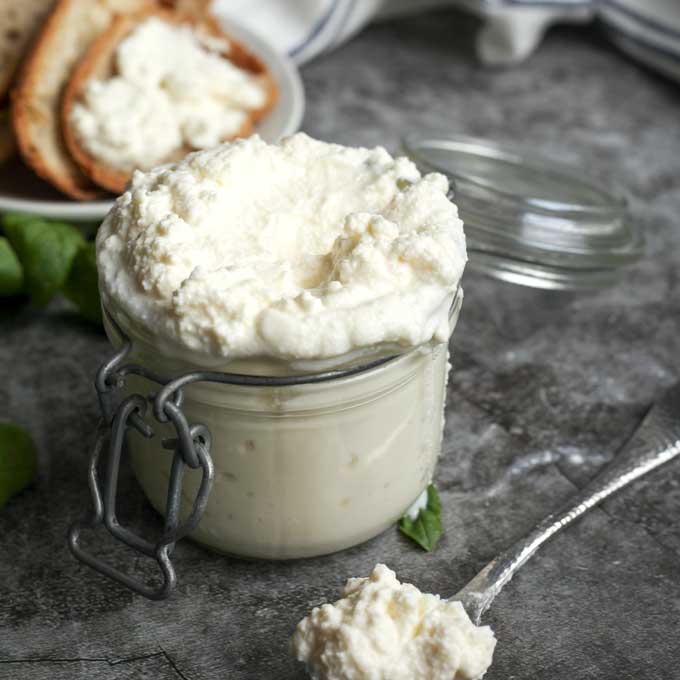
Ingredients:
- 4 cups whole milk
- 2 cups heavy cream
- 1 teaspoon sea salt
- 3 tablespoons fresh lemon juice
Tools and Equipment:
- Large stainless steel pot
- Long knife or curd cutter
- Large slotted spoon
- Cheesecloth
- Colander or large strainer
- Large mixing bowl
- Thermometer
Step-by-Step Guide to Making Your Own Ricotta at Home:
- Prepare your tools: Before you start, make sure all your tools are clean. This is essential to prevent unwanted bacteria from spoiling your cheese.
- Combine the milk, cream, and salt: Pour the milk, cream, and salt into the large pot. Heat over medium heat until a thermometer reads 190°F. Stir occasionally to prevent scorching.
- Add the lemon juice: Once the milk mixture is hot enough, add the lemon juice then reduce the heat to low. Stir gently until curds form, which usually takes about 2 minutes.
- Let it sit: Remove the pot from the heat and let it sit undisturbed for about 5 minutes.
- Strain the curds: Line a colander with a few layers of cheesecloth and place it over a large bowl. Ladle the curds into the colander and let the whey (the liquid left in the pot) drain for at least an hour. The longer you let it drain, the thicker your ricotta will be.
- Store or serve: Once drained to your liking, your ricotta is ready to use! You can use it immediately or transfer it to an airtight container and store it in the refrigerator. Can be kept for about 2 days.
Common Mistakes and How to Avoid Them:
- Not using fresh milk and cream: Always use the freshest dairy you can find for the best results.
- Overheating or stirring too vigorously: Both of these can lead to tough curds. Heat the milk gently and stir slowly.
- Not letting the curds drain long enough: If your ricotta is too wet, it might not hold up in recipes. Let it drain until it’s the consistency you want.
Tips and Tricks:
- You can add different flavors to your ricotta by adding herbs, spices, or sweeteners during the cooking process.
- Ricotta is a versatile cheese that can be used in both savory and sweet dishes. It pairs well with fruits like berries and figs, honey, and nuts for a sweet dish, or with vegetables, garlic, and herbs for a savory dish.
- To store, keep the ricotta in an airtight container in the refrigerator. For longer storage, you can also freeze it.
Enjoy your homemade Ricotta cheese!
The history of Ricotta
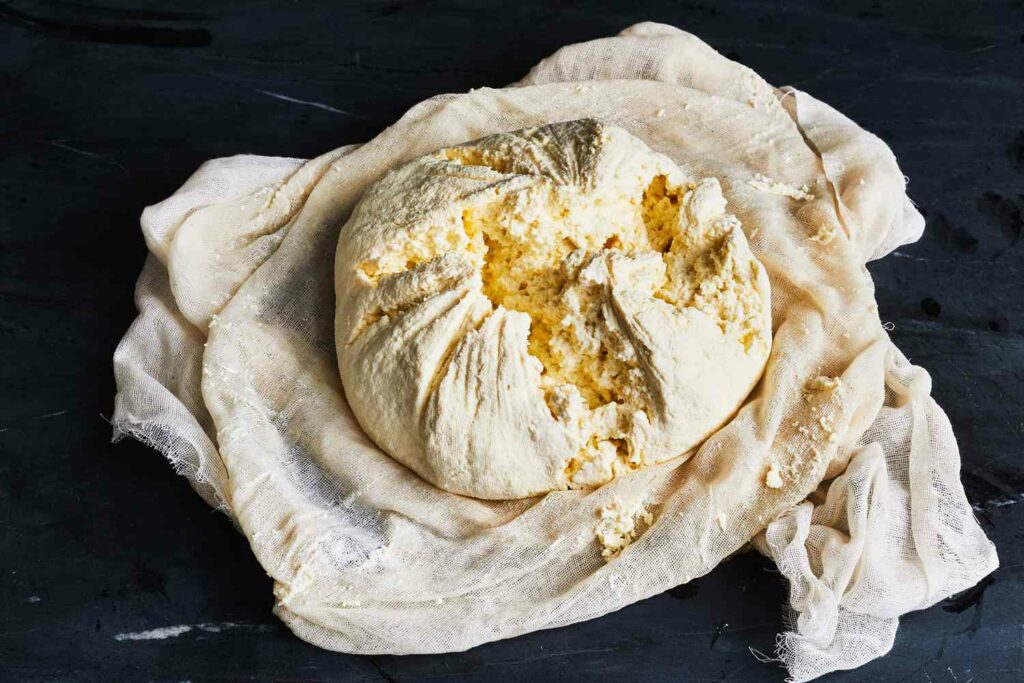
Ricotta cheese has a rich history that dates back to the Bronze Age in Italy. The production of ricotta-like cheese can be traced back to the times when ancient civilizations started domesticating animals and using their milk for various dairy products.
The term “ricotta” means “recooked” in Italian, referring to the method of production. Traditional ricotta is made from the whey left behind after the production of other cheeses like mozzarella and provolone. This whey is reheated, or “recooked,” hence the name, causing the remaining proteins to form into a curd that can be separated and used as cheese.
While exact origins are unclear, we know that the process of making ricotta was well established by Roman times. The cheese is mentioned in several ancient Roman texts, including those by authors Cato the Elder and Pliny the Elder, indicating it was a common part of the diet.
Ricotta remains a staple in many Italian dishes today, from lasagna to cannoli. It’s also become popular worldwide, thanks to its mild flavor and versatility.
Frequently Asked Questions
1. Can you eat Ricotta by itself?
Absolutely, you can eat Ricotta cheese by itself. It has a mild, slightly sweet flavor and creamy texture that can be enjoyed on its own. However, it’s often used as an ingredient in both savory and sweet recipes due to its versatility.
It’s delicious spread on toast, drizzled with honey or mixed with fresh herbs, or even added to a bowl of fresh fruit. But if you want to simply enjoy a spoonful straight from the container, go right ahead!
2. Is it OK to eat Ricotta every day?
Yes, it’s okay to eat Ricotta cheese every day as part of a balanced diet. Ricotta is a good source of protein, calcium, vitamin B12, and vitamin A, which are essential nutrients for your body. It’s relatively high in protein, providing 11.3 grams per 100g serving.
However, like all foods, it should be consumed in moderation due to its calorie content. A half-cup of ricotta cheese has around 216 calories. If you’re mindful of your fat and cholesterol intake, you might want to opt for the part-skim variety.
Ricotta also contains less salt compared to most cheeses, making it a healthier choice. Some research suggests that the high-quality whey in ricotta may promote muscle growth and help lower blood pressure.
So adding ricotta to your everyday meals can be a healthy choice, but always remember to maintain a balanced diet with a variety of other nutrient-rich foods.
3. How to properly store Ricotta
Storing ricotta cheese properly can extend its shelf life and maintain its quality. Here are some steps to correctly store ricotta cheese:
- Refrigeration: After purchasing, ricotta cheese should be kept in the refrigerator at a temperature below 40 degrees Fahrenheit (4 degrees Celsius).
- Seal Well: If you’ve opened the container, make sure to seal it well before putting it back in the fridge. If the ricotta cheese came in a tub, you can just replace the lid. If it was in a bag, you might want to transfer any leftovers to an airtight container.
- Use within 2-5 days: Once opened, ricotta cheese should ideally be used within 2-5 days. Always check for signs of spoilage such as mold, off smell, or changes in appearance before consuming.
- Freezing: If you won’t be able to use the ricotta cheese within a week, you can freeze it. However, the texture may change upon thawing, becoming more grainy and crumbly. It’s best to use frozen ricotta in cooked dishes like lasagna or baked ziti. To freeze, place the ricotta in an airtight container, leaving some space at the top as it will expand when frozen. It can be frozen for up to two months.
Always remember that these are general guidelines and the actual shelf life of ricotta cheese can depend on a variety of factors including the sell-by date, how it was stored at the store, and how it has been handled at home.
Also read:
- Menonita Cheese: A Staple in Northern Mexican Cuisine
- All About Roquefort: An Insider’s Guide to the King of Blue Cheese
- The Ultimate Guide to Bocconcini: From Origin to Plate
- The Ultimate Guide to Muenster Cheese: Savor the Flavor
- The Ultimate Guide to Hoop Cheese: A Southern Delight
- The Ultimate Guide to Chèvre: Exploring Goat Cheese
- The Ultimate Guide to Kasseri: A Taste of Tradition


